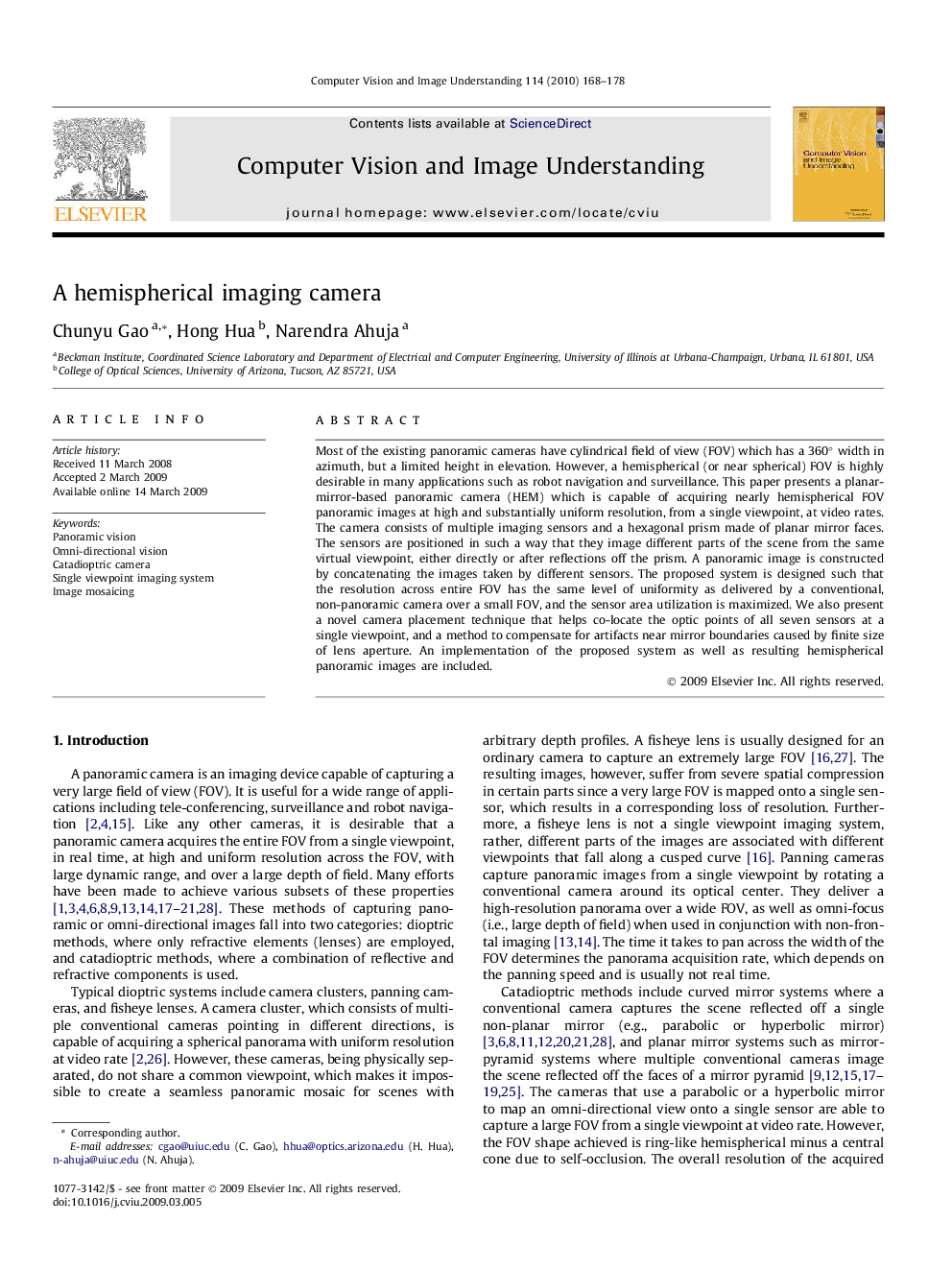| Article ID | Journal | Published Year | Pages | File Type |
|---|---|---|---|---|
| 525802 | Computer Vision and Image Understanding | 2010 | 11 Pages |
Abstract
Most of the existing panoramic cameras have cylindrical field of view (FOV) which has a 360° width in azimuth, but a limited height in elevation. However, a hemispherical (or near spherical) FOV is highly desirable in many applications such as robot navigation and surveillance. This paper presents a planar-mirror-based panoramic camera (HEM) which is capable of acquiring nearly hemispherical FOV panoramic images at high and substantially uniform resolution, from a single viewpoint, at video rates. The camera consists of multiple imaging sensors and a hexagonal prism made of planar mirror faces. The sensors are positioned in such a way that they image different parts of the scene from the same virtual viewpoint, either directly or after reflections off the prism. A panoramic image is constructed by concatenating the images taken by different sensors. The proposed system is designed such that the resolution across entire FOV has the same level of uniformity as delivered by a conventional, non-panoramic camera over a small FOV, and the sensor area utilization is maximized. We also present a novel camera placement technique that helps co-locate the optic points of all seven sensors at a single viewpoint, and a method to compensate for artifacts near mirror boundaries caused by finite size of lens aperture. An implementation of the proposed system as well as resulting hemispherical panoramic images are included.
Related Topics
Physical Sciences and Engineering
Computer Science
Computer Vision and Pattern Recognition
Authors
Chunyu Gao, Hong Hua, Narendra Ahuja,
